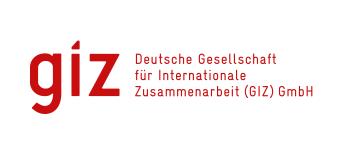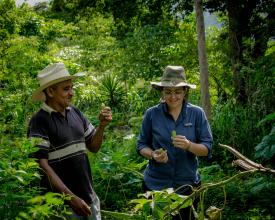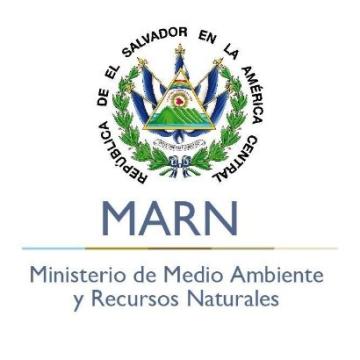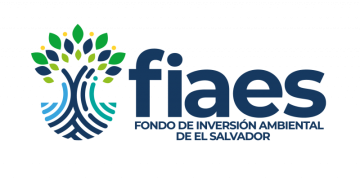
Sustainable Landscape Investment

In 2012, the National Environmental Policy in El Salvador was updated and the Ecosystem and Landscape Restoration Program -PREP- was created, which aims to promote and facilitate the restoration of ecosystems and rural landscapes to ensure the provision of key ecosystem services, as well as the conservation of biodiversity to reduce risk and adapt to the impacts of climate change in 5 prioritized landscapes.
By 2014, investments in ecosystem and landscape restoration were scarce, so the Ministry of Environment and Natural Resources of El Salvador -MARN- , through Ministerial Agreement No.31 defined the signing of cooperation agreements with environmental funds, in order to establish mechanisms to comply with environmental compensation measures; and that the identified resources were invested in the restoration of ecosystems and landscapes.
Context
Challenges addressed
Ecosystem degradation at the landscape level, inadequately funded state strategies and programs, lack of operational personnel in the territories,
Isolated projects and interventions
Environmental funds focused on short-term projects without sustainable presence in the territories.
Location
Process
Summary of the process
The solution has 4 blocks: in the first, the guiding policy framework is created with the objectives, activities and prioritized territories; in the second, an investment vehicle is identified, created or adapted, which in this case is an Environmental Fund, so that it is capable of implementing what is required by the policy instrument; third, a local investment planning instrument is developed, where the policy is materialized under the investment vehicle scheme; and fourth, a bidding scheme is developed to dynamize community participation and involvement.
Building Blocks
Development of a National Program
Prioritization of ecosystems, areas, measures/activities
Enabling factors
Political priority, existence of financing mechanisms, coordination of territorial and cooperating actors in the prioritized areas.
Lesson learned
Importance of creating financing mechanisms or linking existing mechanisms to PREP implementation.
Development of a Local Investment Instrument
The objective of the intervention was to develop strategic planning to guide local investments for ecosystem and landscape restoration in an effective and efficient manner. In order to achieve this objective, a methodological framework was developed that includes four steps: 1) Mapping of relevant local actors at the territorial level, 2) Participatory analysis of the dynamics of environmental degradation, 3) Definition of objectives, goals and restoration activity and 4) placement of resources.
The mapping of relevant local actors was carried out using the GIZ "Capacity Works" cooperation model; for the analysis of environmental degradation and the definition of objectives, the "Open Standards for Conservation Practice" methodology of Conservation Measures Partnerships - CMP was used.
Enabling factors
PREP as a framework,
funding mechanism as an incentive/"promise" of an effective implementation of the PDLS (having in sight a real possibility of receiving funding for the implementation of the PDLS motivates the actors to participate actively).
Trust in FIAES, MARN and GIZ
Lesson learned
Lessons from the construction process, piloting now being used in all areas prioritized by the PREP (?)
Development or Adaptation of an Investment Vehicle
History and structure of the organization
Source of funds: debt swap, environmental offsets, other donations
Governance with cross-sectoral/civil society participation
Investment programming oriented in PREP and concretized or PDLS
Enabling factors
Trust, autonomy, transparency, cross-sectoral participatory/representative governance.
Political priority in restoration
Professional management according to international standards, transparency
Lesson learned
Transformation of the investment strategy: from isolated, one-off projects to sustainable financing of local processes with local participation in planning and implementation.
It might be interesting to study the FIAES documentation or interview the technical staff. Especially the lessons of the change from the programming system to the PDLS.
Execution of Competitions with local organizations
Mechanism for repeated/cyclical competitions for the financing of local projects
Enabling factors
National framework (PREP), local and specific planning (PDLS)
Lesson learned
to improve the project formulation and implementation capacities of local organizations, identifying their administrative and technical capacities beforehand.
Impacts
For 2016 the PDLS accelerated the execution of a local investment of USD $750,198.00.
Beneficiaries
Inhabitants of landscapes prioritized for investment
Sustainable Development Goals
Story
"A starting point was to raise a baseline of the situation we had there and plan, for that we began to do the first exercise in the country to use the Open Standards for Conservation methodology, and build the first PLDS that was made between MARN and GIZ. The Plan establishes some conservation targets, that was the initial way to organize things, for biological and productive issues and people's livelihoods, so mangrove, fishing, forest, agriculture, etc., came out. That Plan defined some needs that had to be addressed: training, technical assistance, investment -because it is not cheap to do restoration-, in sustainable agriculture, for example, it implies making an investment in the first years to then have a sustainable system that no longer needs further investment; then the PDLS was the starting point to organize the work". (Javier Magaña, manager of Natural Protected Areas, MARN, personal communication, September 28, 2018).




